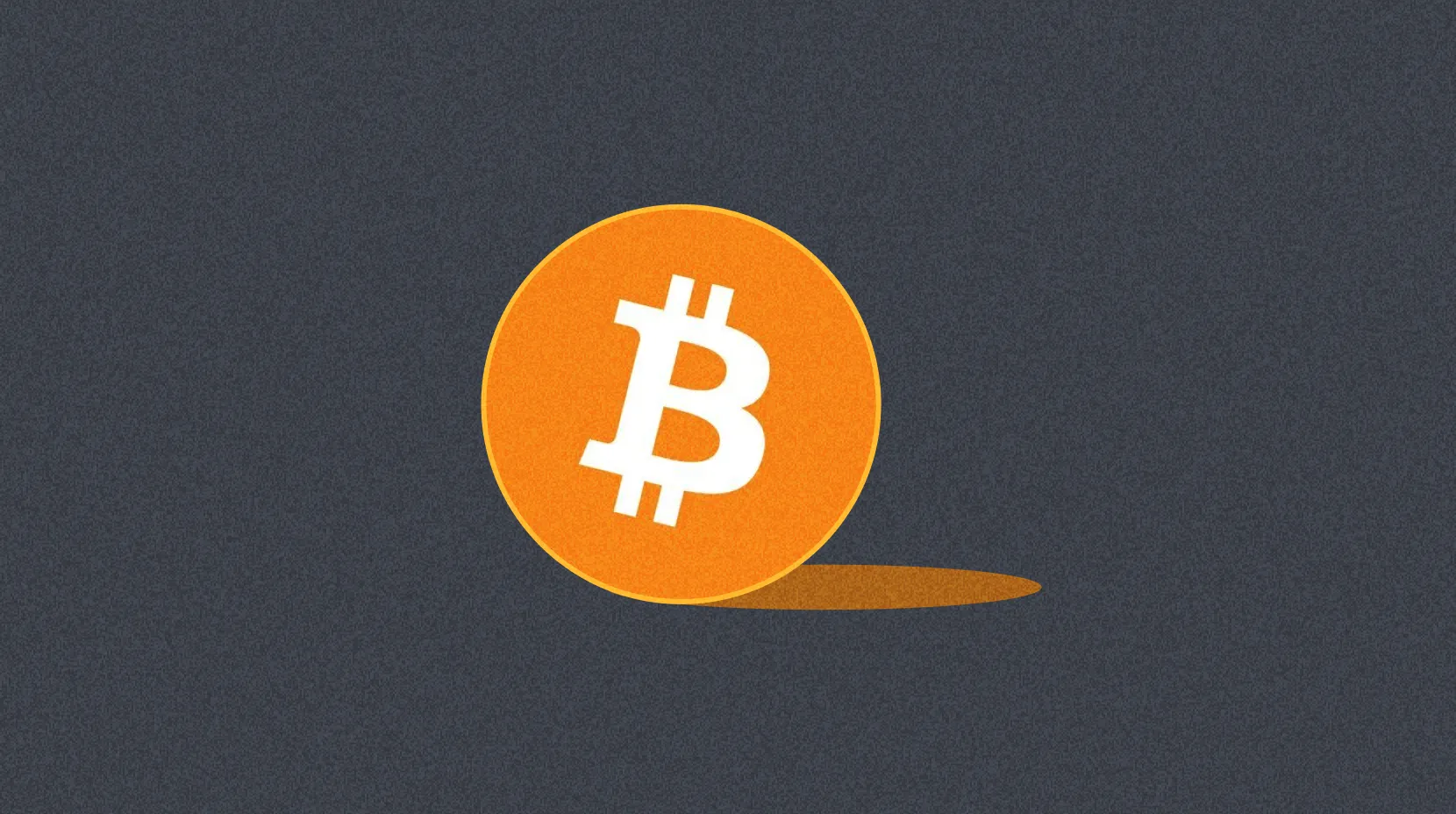Bitcoin Halving คืออะไร?
Bitcoin halving is the process that reduces miner block rewards. Miners validate blockchain transactions and are compensated with a fixed amount of Bitcoin. After 210,000 blocks are added to the chain, the block reward is automatically reduced by half.
This mechanism slows the supply of new BTC, creating programmed scarcity that many analysts link to long-term price appreciation. At present, Bitcoin (BTC) trades at , reflecting a move over the past 24 hours and over the past week. Visit our Bitcoin price chart for the latest data.
Historical Bitcoin Halving Dates
ในปี พ.ศ. 2551 Satoshi Nakamoto ได้เผยแพร่เอกสารไวท์เปเปอร์ "A Peer-to-Peer Electronic Cash System" นำเสนอแนวคิดของบิทคอยน์เป็นครั้งแรก ในเอกสารไวท์เปเปอร์ระบุว่าบิทคอยน์จะลดลงครึ่งหนึ่งเมื่อทุกๆ 210,000 บล็อกถูกขุด จนกว่าจะขุดได้ทั้งหมด 21 ล้านบิทคอยน์
# | วันที่ | บล็อก Halving | รางวัลต่อบล็อกหลัง Halving | ราคาบิตคอยน์ในวัน Halving | ราคาสูงสุด (ในรอบนี้) | อัตราเพิ่มขึ้นสูงสุด (ในรอบนี้) |
|---|---|---|---|---|---|---|
1 | 28 พฤศจิกายน 2555 | 210,000 | จาก 50 BTC ถึง 25 BTC | $12.37 | $1,045.1 | +8343.80% |
2 | 10 กรกฎาคม 2559 | 420,000 | จาก 25 BTC ถึง 12.5 BTC | $647.65 | $19,140.75 | +2855.42% |
3 | 11 พฤษภาคม 2563 | 630,000 | จาก 12.5 BTC ถึง 6.25 BTC | $8,804.47 | $71,396.58 | +710.91% |
4 | 19 เมษายน 2024 | 840,000 | จาก 6.25 BTC เป็น 3.125 BTC | $64,994.44 | $0 | -100.00% |
5 | 11 เมษายน 2028 | 1,050,000 | จาก 3.125 BTC เป็น 1.5625 BTC | -- | -- | -- |
ผลกระทบ: ชาร์ตราคา Bitcoin Halving
ในอดีต Bitcoin halving สัมพันธ์แข็งแกร่งกับตลาดกระทิงของคริปโตทั้งหมดโดยรวม หลังจากเหตุการณ์ Bitcoin halving แต่ละครั้ง ราคาบิทคอยน์เพิ่มขึ้นอย่างมากในอีก 6-12 เดือนข้างหน้า ถึงจุดสูงสุดใหม่ทุกเวลาในแต่ละรอบ
สิ่งนี้มีความหมายกับคุณอย่างไร?
หากคุณเป็นนักลงทุน
การลดจำนวนบิทคอยน์ลงครึ่งหนึ่งจะลดรางวัลการขุดต่อบล็อก นำไปสู่การชะลอตัวของอุปทานใหม่ของบิทคอยน์ สิ่งนี้สามารถส่งผลให้ราคาของบิทคอยน์เพิ่มขึ้นรวมถึงกิจกรรมการซื้อขายที่เพิ่มขึ้นของตลาดคริปโตโดยรวม
หากคุณเป็นนักขุด Bitcoin
รายได้ที่เกิดจากการขุดบิทคอยน์ประกอบด้วยรางวัลบล็อคและค่าธรรมเนียมการทำธุรกรรม การลดรางวัลบล็อคลงครึ่งหนึ่งทำให้รายได้ของผู้ขุดบิทคอยน์ลดลง ในขณะที่พลังการคำนวณสำหรับการขุดบิทคอยน์ยังคงเท่าเดิม
หากคุณเป็นผู้ชม
Bitcoin halvings มีแนวโน้มที่จะทำให้ตลาดกระทิงของคริปโตเกิดขึ้นเป็นอย่างมาก ทำให้ผู้คนจำนวนมากทั้งในและนอกชุมชนคริปโตจับตามองตลาดคริปโตและ FOMO จำนวนมากมักจะเกิดขึ้นในช่วงนี้ของวัฏจักรนี้
เครื่องคำนวณการลงทุนอัตโนมัติใน BTC
USDT
คำเตือนความเสี่ยง: การลงทุนอัตโนมัติไม่ได้รับประกันผลกำไร และมีความเสี่ยงที่อาจสูญเสียเงินต้น ควรลงทุนในจำนวนที่คุณสามารถยอมรับการขาดทุนได้
ใครเป็นผู้ควบคุมการปล่อย Bitcoin ?
ไม่มีใครควบคุมการปล่อยหรือจัดหาบิทคอยน์แต่อุปทานของบิทคอยน์เป็นไปตามชุดของกฎการเขียนโปรแกรมของบล็อกเชน กฎเหล่านี้คือ:
Satoshi Nakamoto ผู้สร้างบิทคอยน์ได้แนะนำ Bitcoin halving เพื่อควบคุมการผลิตบิทคอยน์เพื่อไม่ให้เกิดภาวะเงินฝืด ตรงข้ามกับสกุลเงิน fiat นี่คือจุดที่ความงามของ Bitcoin โดดเด่นเมื่อเทียบกับเงินตรา ซึ่งรัฐบาลกลางสามารถพิมพ์สกุลเงินของตนได้มากขึ้นตามต้องการ ทำให้เกิด เงินเฟ้อ ต่อทั้งประเทศ หรือในกรณีของ USD ต่อทั้งโลก
Why is Bitcoin halving important?
Bitcoin halving is important because it ensures scarcity, lowers inflation, and has a profound impact on Bitcoin's price, miners, and overall market psychology.
1. Ensuring Scarcity and Value
Bitcoin halving reduces the pace of new supply entering circulation. With demand stable or rising, this enforced scarcity strengthens Bitcoin's value proposition. Unlike fiat currencies that can be inflated through unlimited printing, Bitcoin's fixed supply and predictable issuance make it a deflationary digital asset often compared to gold.
2. Market Psychology and Historical Price Trends
Each halving attracts enormous attention from media, traders, and investors. This increased awareness fuels optimism, speculation, and often greater demand. Historically, halvings have preceded major bull markets: from under $13 to $1,000 after 2012, nearly $20,000 in 2017 following the 2016 halving, and an all-time high close to $69,000 after the 2020 halving. While not guaranteed, these patterns make halvings pivotal market events.
3. Impact on Miners and Network Security
Halving directly affects miners by cutting block rewards in half. This forces miners to innovate, upgrade hardware, and reduce costs. While smaller miners may exit, the network becomes more efficient in the long term. Eventually, transaction fees are expected to replace block rewards as the primary incentive, ensuring the Bitcoin network remains secure even after all 21 million coins are mined.
4. Predictable Monetary Policy
Halving highlights Bitcoin's transparent rules. Everyone knows when the next halving will occur, how many coins will exist, and when the final Bitcoin will be mined. In contrast to fiat monetary systems, which are subject to political decisions and central bank interventions, Bitcoin's predictable schedule builds trust and makes it attractive to both individuals and institutions.
ตัวจับเวลา Bitcoin Halving: คำนวณอย่างไร?
รหัสโอเพ่นซอร์สโดย ซอฟต์แวร์ Bitcoin Core เกิดขึ้นเมื่อการลดลงครึ่งหนึ่งครั้งต่อไปจะเกิดขึ้นตามขนาดปัจจุบันของรางวัลบล็อก จำนวนรอบการลดลงครึ่งหนึ่ง และโดยการหารความสูงของบล็อกปัจจุบัน210,000. หากความสูงของบล็อกปัจจุบันคือ 840,000 ให้หารด้วย 210,000 และคำตอบคือ 4 หลังจากทิ้งทศนิยมไปแล้ว รหัสก็รู้ว่าเรามี 4 halving จากนั้นโค้ดคาดการณ์ว่าการลดลงครึ่งหนึ่งครั้งต่อไปจะเกิดขึ้นที่ความสูงของบล็อก 1,050,000 ซึ่งประมาณวันที่ 11 เมษายน 2028
1CAmount GetBlockSubsidy(int nHeight,const Consensus: :Params & consensusParams)
2{
3 int halvings = nHeight / consensusParams.nSubsidyHalvingInterval;
4 // Force block reward to zero when right shift is undefined.
5 if (halvings >= 64)
6 return 0;
7 CAmount nSubsidy = 50 * COIN;
8 // Subsidy is cut in half every 210,000 blocks which will occur approximate1
9 nSubsidy >>= halvings;
10 return nSubsidy;
11 }How Does Bitcoin Halving Affect The Price of Bitcoin?
Bitcoin halving often creates upward pressure on price by reducing new supply, but its actual impact depends on market demand, investor psychology, and broader economic conditions.
1. Supply and Demand Dynamics
The most direct way halving influences Bitcoin's price is through supply. Every 210,000 blocks, the block reward is cut in half, slowing the rate at which new coins enter circulation. With fewer Bitcoins available and demand remaining steady or increasing, the reduced supply growth creates upward pressure on price. This simple supply-demand mechanism forms the backbone of most bullish arguments around halvings.
2. Historical Market Reactions
History shows a consistent pattern: each halving has been followed by major bull markets. After the 2012 halving, Bitcoin rose from under $13 to over $1,000. The 2016 halving preceded a rally to nearly $20,000 in 2017. Following the 2020 halving, Bitcoin climbed to an all-time high of almost $69,000 in 2021. While correlation is strong, it's important to note that the timing of price surges varied, with rallies often coming months after the halving itself.
3. Investor Psychology and Market Hype
Beyond supply mechanics, halvings are psychological milestones. Anticipation of reduced issuance fuels optimism and speculation, often creating buying momentum before and after the event. Media coverage, institutional reports, and social media buzz all amplify this effect, drawing new investors into the market. This cycle of attention and expectation can drive prices higher regardless of immediate fundamentals.
4. Short-Term Volatility vs Long-Term Growth
Not every halving leads to instant price increases. In the short term, markets can be volatile as traders speculate and miners adjust. Prices may even dip temporarily before recovering. Over the long term, however, halvings reinforce Bitcoin's scarcity narrative and have historically coincided with significant bull cycles, making them key events for long-term investors.
When Is The Next Bitcoin Halving?
The next Bitcoin halving is projected to occur on April 11, 2028, at block height 1,050,000. At that point, the block reward for miners will decrease from 3.125 BTC to 1.5625 BTC, further slowing Bitcoin's supply growth. Halving events are crucial because they reinforce Bitcoin's scarcity and have historically influenced long-term price trends.
When Was The Last Bitcoin Halving?
The most recent Bitcoin halving took place on April 19, 2024, at block height 840,000. During this event, the block reward dropped from 6.25 BTC to 3.125 BTC. This reduction not only impacts miner incentives but also highlights Bitcoin's programmed scarcity, which has been a key factor behind its historical price appreciation.
What Happens When All Bitcoins Are Mined?
When all 21 million Bitcoins are mined, expected around the year 2140, no new coins will enter circulation. At that point, miners will no longer receive block rewards but will be compensated entirely through transaction fees paid by users. This ensures miners remain incentivized to validate transactions and secure the network, keeping Bitcoin functional and decentralized even after the maximum supply is reached.
Strategies for Navigating the Next Bitcoin Halving
In light of the significant impact the next Bitcoin halving may have on the cryptocurrency market, investors, traders, and miners are already preparing strategies to navigate the potential volatility and opportunities. While halvings are predictable in schedule, their market outcomes are shaped by multiple factors, making it essential to approach them with clear, disciplined plans.
1. Diversification
Diversification remains one of the most effective ways to mitigate risk. By spreading exposure across different asset classes—including Bitcoin, other cryptocurrencies, equities, and commodities—investors can reduce their vulnerability to sharp corrections during volatile halving cycles. Within crypto, diversification might also mean holding assets that have distinct use cases, such as Ethereum for smart contracts or stablecoins for liquidity. This approach helps stabilize portfolios and provides protection against the unpredictable effects of halving-driven speculation.
2. Dollar Cost Averaging (DCA)
Dollar Cost Averaging is a proven strategy for long-term participants who want to accumulate Bitcoin steadily. By investing a fixed amount on a regular schedule—regardless of Bitcoin's price—investors smooth out volatility and avoid the pitfalls of trying to time the market. Historically, DCA has allowed Bitcoin holders to benefit from long-term appreciation while minimizing stress from short-term price swings. As the halving reduces issuance and potentially supports higher valuations over time, DCA provides a disciplined way to build exposure to Bitcoin's long-term potential.
3. Strategic Trading
For active traders, halving events present both risks and opportunities. Increased speculation often leads to sharp price swings before and after the event. Traders who conduct thorough research, monitor on-chain data, and track macroeconomic trends can better anticipate market reactions. Approaches such as swing trading, momentum strategies, or cautiously using derivatives may allow traders to capitalize on volatility. However, disciplined risk management is essential, including the use of stop-loss orders and clear position sizing to avoid overexposure.
4. Risk Management and Capital Preservation
Halving cycles often amplify both optimism and uncertainty, making risk management more important than ever. Investors should set clear portfolio allocations, establish stop-loss levels, and avoid excessive leverage. Rebalancing regularly helps lock in gains while keeping portfolios aligned with long-term goals. Protecting capital during turbulent times ensures investors remain in the market to benefit from future growth rather than being forced out during downturns.
5. Miner Strategies
For miners, halving is a critical test of sustainability. With block rewards cut in half, miners must adapt by improving efficiency, upgrading hardware, and securing access to low-cost energy. Pooling resources with other miners, relocating to regions with favorable electricity costs, or integrating renewable energy can improve profitability. Additionally, miners may explore supplementary revenue streams, such as offering transaction processing services. Adapting early ensures survival in the post-halving environment where transaction fees gradually replace block rewards as the main incentive.
6. Institutional vs. Retail Approaches
Institutions and retail investors often respond differently to halving events. Institutions may use structured products like ETFs, futures, and custody solutions to gain exposure while managing risk. Retail investors, by contrast, are often influenced by media coverage and community narratives. To avoid emotional decision-making, retail participants should prioritize education, employ DCA strategies, and diversify portfolios. Both groups benefit from recognizing the psychological aspect of halving: while it can fuel optimism, disciplined execution is key to achieving sustainable results.
Conclusion: Positioning for the Future
The next Bitcoin halving is more than a technical milestone—it is an event that shapes Bitcoin's economic model and market psychology. Strategies such as diversification, dollar cost averaging, strategic trading, and disciplined risk management allow participants to navigate uncertainty while positioning for long-term growth. For miners, operational efficiency is critical, while investors must balance optimism with caution. Ultimately, success in navigating the next halving lies in preparation, adaptability, and a clear understanding that while history offers guidance, future outcomes will be shaped by a complex mix of supply dynamics, demand growth, and global economic conditions.
Bitcoin (BTC) Price Chart
Bitcoin Price/ BTC
$0
Bitcoin (BTC) Latest News
FAQ: Bitcoin Halving Explained
- Bitcoin halving is a programmed event that reduces the reward miners receive for validating transactions by 50%. It occurs every 210,000 blocks, roughly every four years, until the maximum supply of 21 million BTC is reached. This mechanism ensures scarcity and makes Bitcoin a deflationary digital asset.
ข้อจำกัดความรับผิดชอบ
ตลาดสกุลเงินดิจิทัลมีความเสี่ยงสูง ผู้ใช้ควรดำเนินการวิจัยอิสระและทำความเข้าใจอย่างถ่องแท้ถึงธรรมชาติของสินทรัพย์และผลิตภัณฑ์ที่นำเสนอก่อนตัดสินใจลงทุน Gate จะไม่รับผิดชอบต่อความสูญเสียหรือความเสียหายใดๆ ที่เกิดจาก การตัดสินใจทางการเงินดังกล่าว นอกจากนี้ โปรดทราบว่า Gate อาจไม่สามารถให้บริการได้เต็มรูปแบบในบางตลาดและเขตอำนาจศาล แต่ไม่จำกัดเพียงสหรัฐอเมริกา แคนาดา อิหร่าน และคิวบา สำหรับข้อมูลเพิ่มเติมเกี่ยวกับตำแหน่งที่ถูกจำกัด โปรดดูที่ หัวข้อ 2.3(d) ของข้อตกลงผู้ใช้

เริ่มตอนนี้
สมัครและรับรางวัล $100 และ $5,500 Voucher!



